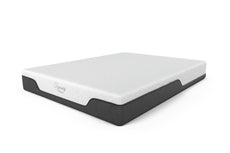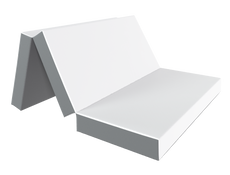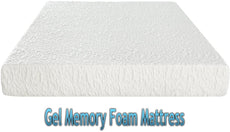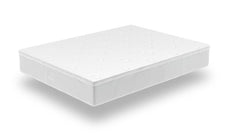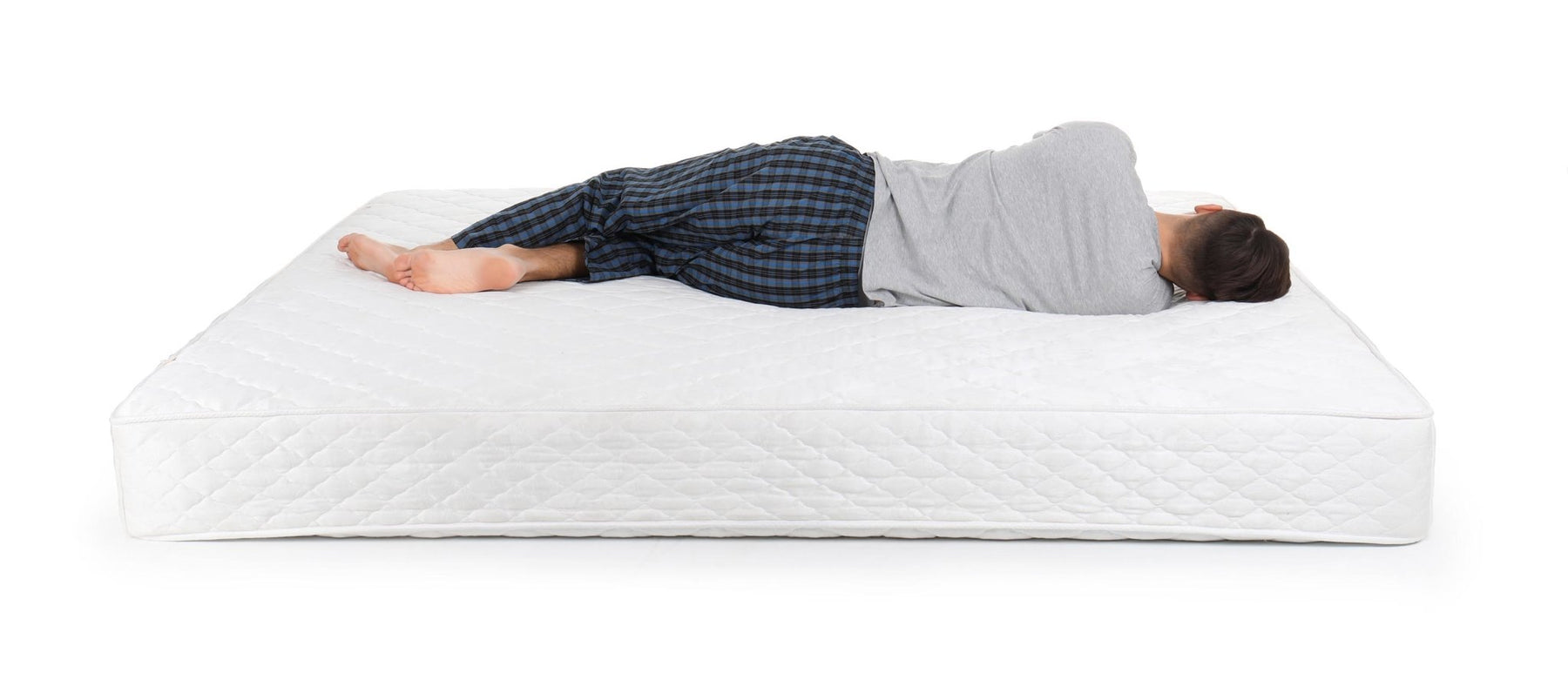
Pillow Top vs. Memory Foam Mattresses: A Simple Comparison
Pillow Top vs Memory Foam Mattresses: What are the Differences?
Are you thinking about getting a new mattress? You've got lots of options to choose from. Pillow top and memory foam mattresses are some of the most popular choices available to you. But how do you choose between the two? We'll help you with that in this article, where we'll compare pillow top mattresses to memory foam mattresses and highlight their many differences.
What Is A Pillow Top Mattress?
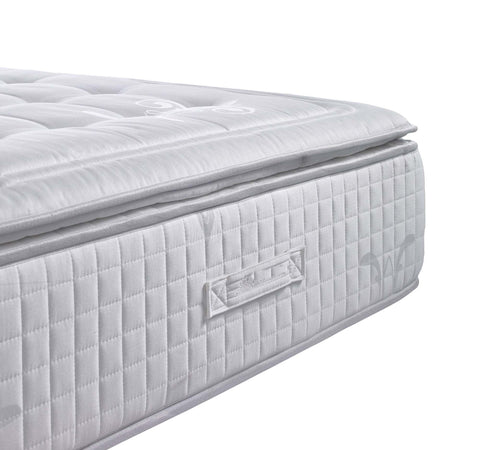
A pillow top mattress is a mattress with an extra layer of cushioning on the surface. This layer usually consists of foam, latex, down, wool, polyester, or a combination of materials. Pillow top mattresses are designed to provide extra comfort to any given mattress. They may be sewn onto the mattress or fitted over the top.
You'll usually find pillow top mattresses on more traditional innerspring mattresses, although some hybrid and foam mattresses also have a pillow top option. Pillow top mattresses are ideal for people who sleep on their side.
Pros and Cons of Pillow Top Mattresses
To further understand if a pillow top mattress is the best fit for you, here are some of their pros and cons:
Pros:
- Extra cushioning on the surface of the mattress can make your sleeping space feel more luxurious.
- Ideal for side sleepers who need more cushion for pressure points.
- Can be used with a wide range of mattresses.
Cons:
- Can be more expensive than traditional mattresses.
- Don't reduce motion transfer.
- Are not very durable when compared to other mattress types.
What Is a Memory Foam Mattress?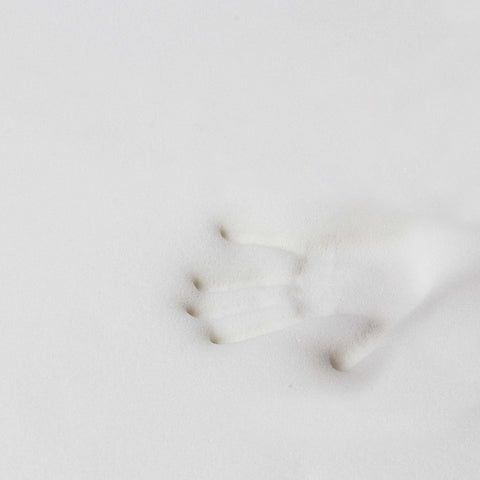
A memory foam mattress is made from polyurethane foam. This type of foam is designed to conform to the shape of your body. Memory foam mattresses are touted for their ability to provide exceptional pressure relief, support, and contouring.
Contrary to what many think, there are several types of memory foam mattresses available. In addition to traditional memory foam, there are open-cell and gel options. Here's a quick explanation of both of them:
- Open-cell memory foam mattresses are made from foam that has pores. These pores improve breathability, making the mattress cooler than traditional memory foam.
- Gel-infused memory foam mattresses are designed to be extra cooling. Gel beads are embedded in the foam, which keeps you from getting too hot at night.
Pros and Cons of Memory Foam Mattresses
Are you leaning more toward memory foam mattresses? They may be perfect for you. But before you make any decisions, take a look at some of their pros and cons for a bit more insight:
Pros:
- Conforms to the shape of your body for excellent pressure relief.
- Great at reducing motion transfer for couples.
- Can help with spinal alignment and support to prevent back and hip issues.
Cons:
- Can be very expensive.
- Traditional ones retain heat, so they may not be ideal for people who get hot easily. If that sounds like you, opt for open-cell or gel memory foam instead.
- You may sink into your memory foam mattress, which can make it difficult to move around on the bed.
- Off-gassing odor can be a bit overpowering when the mattress is first delivered.
The Differences Between Pillow Top And Memory Foam Mattresses
Now that you understand what pillow top and memory foam mattresses are, let’s move onto the good stuff. In the section below, we’ll dive into 7 important differences between pillow top and memory foam mattresses.
-
Comfort
When it comes to comfort, pillow top mattresses are great if you like a cloud-like, plushy sleep surface. They are super soft to the touch and can provide that extra bit of cushioning you need to sleep like royalty. Memory foam mattresses, on the other hand, are ideal for those who like to feel cradled and supported by their mattress. No other mattress type can conform to your joints, curves, and body positions like memory foam.
-
Durability
Memory foam mattresses are generally more durable than pillow top mattresses. This is because memory foam mattresses have a lot of resilience and hold up better over time. On average, memory foam mattresses last around 8 years or more, while pillow top mattresses last about 3 years. This makes memory foam mattresses a better long-term investment.
-
Price
As you might expect, memory foam mattresses are usually more expensive than pillow top mattresses due to their superior quality and durability. Most memory foam mattresses cost anywhere between $250 to $2,000+ depending on the type and quality. Pillow top mattresses usually range from $150 to about $1,000+, making them the more affordable option.
-
Motion Transfer
Memory foam mattresses are the clear winner when it comes to motion transfer. Memory foam absorbs motion, so when one person moves, the other person will be less likely to feel it. Pillow top mattresses do not absorb motion as well, so they may not be the best option for couples.
-
Bounce
Memory foam mattresses don't provide much bounce, while pillow top mattresses are a bit more on the bouncy side. But neither option is as bouncy as an innerspring mattress. If that's your speed, an innerspring mattress may be the better overall option.
-
Versatility
Pillow top mattresses are most often recommended for side sleepers, whereas memory foam mattresses can be used for all types of sleepers, Why? Memory foam mattresses can be manufactured in various firmness levels. For most, “medium firm” is the standard in comfort. But if you like a little more softness, “medium soft” is a good firmness to start with. If you want your mattress to be unmistakably firm, go for “firm” or “very firm.”
Lost? Take this 10 second quiz to find the right firmness for you based on your weight and sleeping preferences.
-
Temperature Regulation
Cheap memory foam mattresses can be quite hot, though open cell and gel varieties are designed to regulate body heat and keep you cool. Unlike traditional memory foam mattresses, most pillow top mattresses sleep fairly cool.
Pillow Top or Memory Foam: Which Mattress Type Is Right For You?

To determine which mattress is right for you, it's important to think about your sleep preferences and individual needs. If you prefer softness over everything else, a pillow top mattress may be your best bet. This applies to you, especially if you sleep primarily on your side. But if you want to maximize comfort and durability and don't mind paying for both, go for a memory foam mattress. These mattresses are ideal for everyone, regardless of their sleeping position.
If you're wondering which option is best overall, many might think the answer is obvious: memory foam. But in reality, it all depends on you. Though most people will find memory foam mattresses to be superior to pillow tops, everyone has their own preferences, so make sure to consider your individual needs before making a decision.
We hope that this article has helped you understand the differences between pillow top and memory foam mattresses. Regardless of the type of mattress you choose, we wish you restful, rejuvenative sleep and sweet dreams!
Other articles you may like
0 comments
